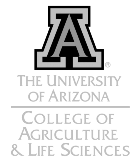Dec 10, 2025
Soil Health: Organic and Inorganic Industrial Fertilizers Impact of Crop and Soil Health
Organic and inorganic fertilizers are both valuable tools in crop production systems. For optimal soil health management, it is best to understand how organic and inorganic fertilizers are processed and function in the soil and contribute to soil health.
Plants absorb nutrients in specific inorganic ionic forms such as nitrate and ammonium (NO3−, NH4+); phosphate. Plants primarily absorb phosphorus (P) as inorganic orthophosphate ions, which are either hydrogen phosphate (HPO42−) or dihydrogen phosphate (H2PO4−), depending on the soil pH. Potassium (K) is taken up by plants as the monovalent potassium ion (K+).
The ionic forms of nutrients taken up by plants are identical whether they originate from organic or inorganic industrial fertilizers (Havlin et al., 2014). The source of the nutrient does not determine the form of the nutrient taken up by plants nor does the source of the nutrient determine crop health. The transformations of soil nitrogen (N) into plant-available forms serves as a good example, illustrated in the N cycle, shown in Figure 1.

Figure 1. The nitrogen cycle. Source: Stevenson, 1982.
Crop performance and soil health are influenced by the timing of fertilizer applications and the quantity of nutrients applied and delivered to best match plant needs (Fageria, 2009). The fertilizer source is important in terms of the reactions and time required to convert it into plant-available forms in the soil.
The major differences between organic and inorganic fertilizers are found in the way they impact soil properties. Organic fertilizers provide nutrients in complex carbon-based matrices and contribute organic material to the soil that can contribute to the stable soil organic matter (SOM) as they decompose.
Increased organic material inputs (such as animal manure, crop residues, etc.) can improve soil aggregate stability, which contributes to improved soil structure and the soil-water-holding capacity. Improved soil structure enhances aeration and internal soil-water movement and drainage. These factors also serve to stimulate a diverse soil microbial community (Drinkwater and Snapp, 2007).
Long-term application of organic fertilizers or amendments has been shown to enhance soil carbon stocks, biological activity, and nutrient cycling (Fließbach et al., 2007; Clark et al., 1998). These biological and physical improvements from organic fertilizer applications are usually found in direct proportion to the natural tendencies of the soil-plant system to accumulate and maintain higher SOM levels (Figure 2).

Figure 2. Soil organic matter content across the continental United States.
Inorganic fertilizers have definite advantages that include the ability to supply nutrients in concentrated, soluble forms designed to maximize availability, improve fertilizer efficiency, and support full crop yield potential. Strengths of inorganic fertilizers include precision, predictability, and the ability to match nutrient supply to crop demand (Fixen et al., 2015).
Because inorganic fertilizers do not contain or supply organic material, crop production systems that rely exclusively on inorganic nutrient sources may exhibit gradual declines in soil structure and biological activity. This is directly remedied when organic materials are incorporated into the soil on a regular basis. For example, important sources of organic materials that can be incorporated into soil include crop residues, green manures, or added amendments such as animal manure (Powlson et al., 2011).
Crop rotation systems are also important in managing organic material additions and incorporating them into the soil. For example, including a legume crop (i.e., alfalfa, clover, soybeans, etc.) into a crop rotation system provides large inputs of organic material through above ground crop residues, extensive root systems, and residual N from the natural symbiotic N fixation that legume plants provide in combination with specific Rhizobium bacteria species.
Negative impacts from inorganic fertilizers can include soil acidification (particularly in soils that have neutral or low pH and are poorly buffered), increased salinity, or nutrient losses. Each of these negative features are not directly due to the inorganic fertilizer source but these are the typical results of over-application and poor management.
However, it is also important to note that increased salinity and nutrient immobilization can occur from the application of many organic fertilizers, particularly animal manure. An analysis of any animal manure amendment applied to the soil is important for soil health management.
The evidence from several major long-term field experiments evaluating sources of organic and inorganic nutrient sources supports a balanced interpretation. For example, numerous long-term experiments have been conducted at the Rothamsted Experiment Station in England, which is one of the oldest agricultural research institutions in the world, founded in 1843. These Rothamsted studies have shown that organic amendments can increase soil organic carbon but often provide lower nutrient availability relative to inorganic industrial fertilizers (Johnston et al., 2017).
An important caveat to the Rothamsted experiments is to note that it has a temperate maritime climate (also known as oceanic) characterized by mild winters, cool summers, moderate year-round rainfall, and a lack of extreme temperature. Average annual rainfall is approximately 30 inches with a mean annual temperature of ~ 50° F.
The Pacific Northwest of the United States is a similar climate to Rothamsted, England. That is a climatic environment that is naturally conducive to higher SOM accumulation (Figure 2). It is not appropriate to make direct extrapolations from experiments on soil health conducted in climate and soil conditions such as in Rothamsted, England, to the desert Southwest. However, general patterns of response can be deduced from field experiments conducted in one region and applied in a very different region of application.
Several experiments from the Kellogg Biological Station in Hickory Corners, Michigan and the Rodale Institute in Kutztown, Pennsylvania (also two very dissimilar regions to the desert Southwest) report enhanced soil biological functioning in organic systems, but consistently lower yields compared with conventional systems unless organic nutrient sources are applied at very high rates (Robertson et al., 2014; Seufert et al., 2012), which becomes impractical in most cases.
Summary
Collectively, a review of these studies indicates that integrated nutrient management, which combines organic inputs for soil health with inorganic fertilizers for precise and efficient nutrient supply, provides the most robust and sustainable outcomes in crop production systems. This can be accomplished in conventional production systems with good crop rotations and the inclusion of organic amendments, and very importantly the appropriate management of the timing and application rates of inorganic fertilizers.
It is not accurate to assert that organic fertilizers inherently produce healthier crops or soils. It is correct that organic fertilizers can be important tools in improving soil health by increasing organic material inputs, which can contribute to maintaining or improving SOM content and supporting soil biological processes. It is also correct to state that inorganic fertilizers most efficiently deliver plant-available nutrients to the soil.
An integrated management system that properly utilizes both organic and inorganic fertilizers provides the best results for crop and soil health and agroecosystem sustainability. The most resilient and productive crop production systems strategically use both types within a comprehensive soil fertility program. Proper management is the key factor in soil health development.
References:
Clark, M.S., W.R. Horwath, C. Shennan, and K.M. Scow. 1998. Changes in soil chemical properties resulting from organic and low-input farming practices. Agron. J. 90:662–671.
Drinkwater, L.E., and S.S. Snapp. 2007. Nutrients in agroecosystems: Rethinking the management paradigm. Adv. Agron. 92:163–186.
Fageria, N.K. 2009. The Use of Nutrients in Crop Plants. CRC Press, Boca Raton, FL.
Fixen, P., F. Brentrup, T. Bruulsema, F. Garcia, R. Norton, and S. Zingore. 2015. Nutrient/fertilizer use efficiency: Measurement, current situation and trends. In: P. Drechsel et al., editors, Managing Water and Fertilizer for Sustainable Agricultural Intensification. IFA, IWMI, IPNI, and IPI. p. 8–38.
Fließbach, A., H.-R. Oberholzer, L. Gunst, and P. Mäder. 2007. Soil organic matter and biological soil quality indicators after 21 years of organic and conventional farming. Agric. Ecosyst. Environ. 118:273–284.
Havlin, J.L., S.L. Tisdale, W.L. Nelson, and J.D. Beaton. 2014. Soil Fertility and Fertilizers. 8th ed. Pearson, Upper Saddle River, NJ.
Johnston, A.E., P.R. Poulton, and K.S. Coleman. 2017. Soil organic matter: Its importance in sustainable agriculture and carbon dioxide fluxes. Adv. Agron. 142:1–63.
Powlson, D.S., C.M. Stirling, M.L. Jat, B.G. Gerard, C.A. Palm, P. Sanchez, and K.G. Cassman. 2011. Soil organic matter, food security, and climate change: A review. Agron. J. 103:351–363.
Robertson, G.P., S.K. Hamilton, D.A. Philpott, A.M. Schmidt, and S.K. Applegate. 2014. Long-term ecological research in agricultural landscapes at the Kellogg Biological Station LTER site. Bull. Ecol. Soc. Am. 95:292–312.
Seufert, V., N. Ramankutty, and J.A. Foley. 2012. Comparing the yields of organic and conventional agriculture. Nature 485:229–232.
Stevenson, F.J. 1982, Origin and distribution of nitrogen in soils. In: F.J. Stevenson, Ed., Nitrogen in Agricultural Soils, American Society of Agronomy, Madison, WI, pp. 1-42.





















